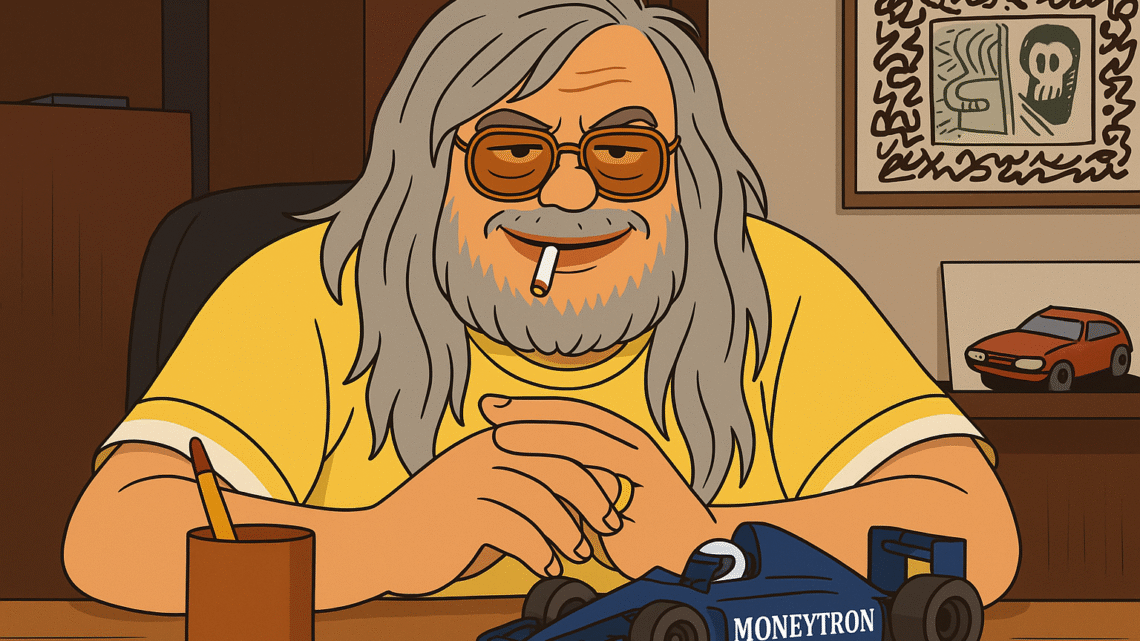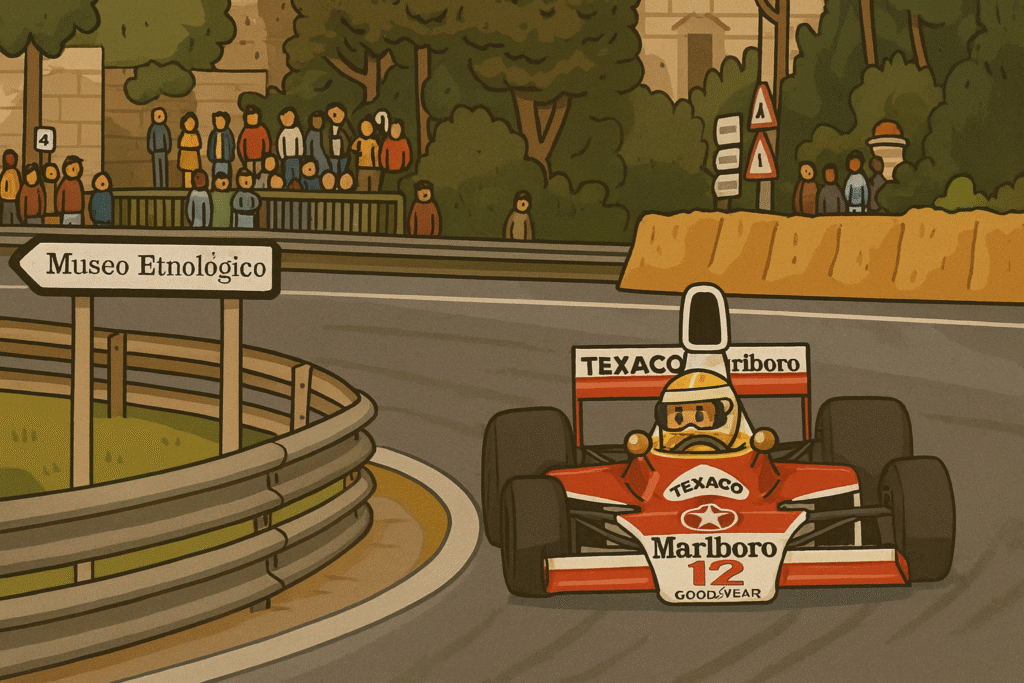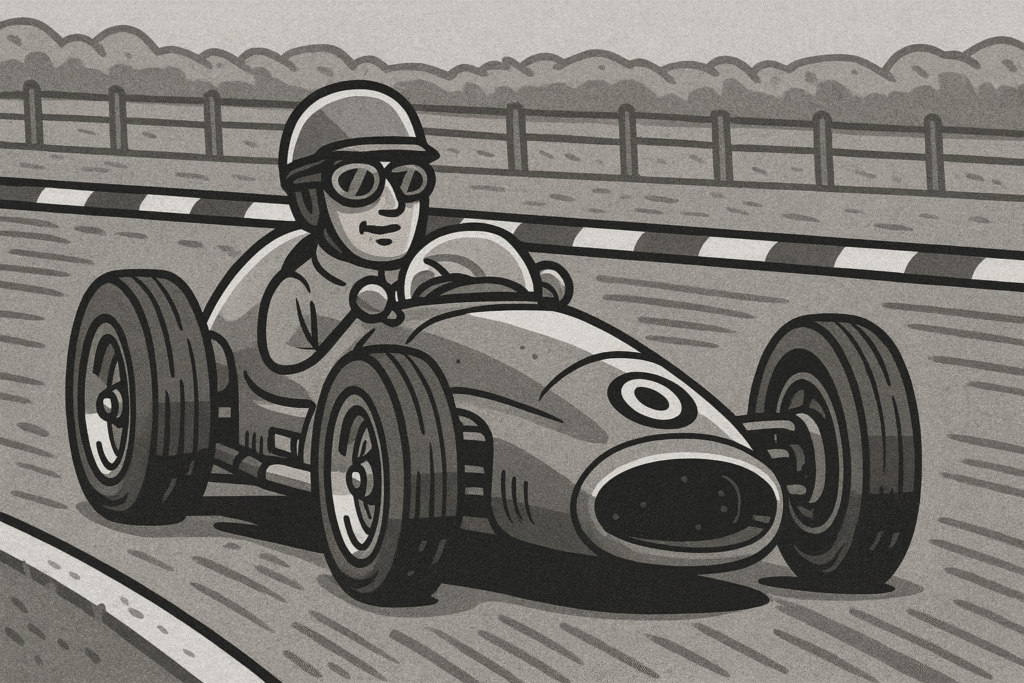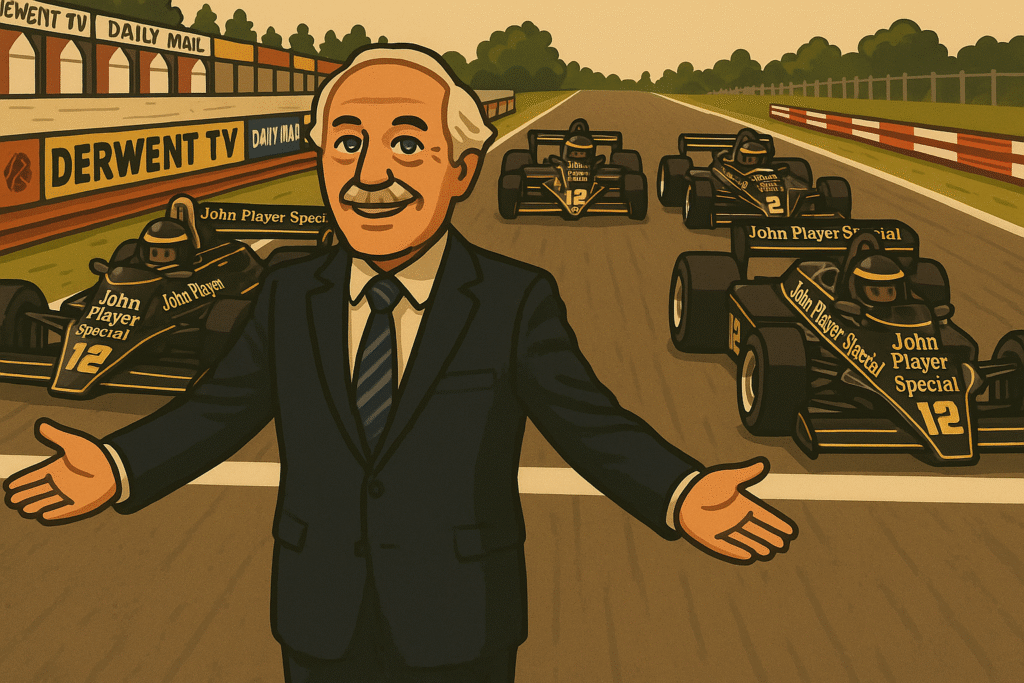
Jean-Pierre Van Rossem: The Fraudster Who Brought Ponzi Schemes to F1
September 4, 2025In the colorful, often chaotic history of Formula 1, few figures stand out quite like Jean-Pierre Van Rossem. This Belgian eccentric, with his wild white beard and flowing hair, wasn’t your typical team owner—he was a self-proclaimed genius economist, a convicted fraudster, and a political rabble-rouser who briefly injected his dubious fortunes into the sport. Born on May 29, 1945, in Bruges, Van Rossem’s life was a whirlwind of bold claims, scandalous exploits, and financial trickery that culminated in his ownership of the Onyx F1 team from 1989 to 1990. His Moneytron system, a supposed supercomputer that could predict stock markets, funded the venture, but it was all smoke and mirrors—a massive Ponzi scheme that bilked investors out of millions. Van Rossem’s F1 stint was short, marked by modest on-track results, off-track drama, and a legacy of controversy. From his wild paddock appearances to his brushes with the law, this tale dives into the man who turned grand prix racing into his personal playground, blending ambition with absurdity in a way only the ’80s could allow.
The Making of a Maverick: Early Life and the Moneytron Mirage
Jean-Pierre Van Rossem’s journey to F1 began far from the racetracks, in the academic halls of Belgium. A bright but unconventional mind, he studied economics at the University of Ghent, where he loved stirring the pot with unorthodox ideas. By the 1970s, he’d reinvented himself as a financial guru, penning books on econometrics and boasting that he’d cracked the stock market’s secrets. His big idea—Moneytron—emerged in the early 1980s, promising a supercomputer algorithm that could predict trends with eerie precision. Van Rossem, with his theatrical flair, kept the “machine” under lock and key, accessible only to him, and lured investors with tales of 40-50% returns. At its height, he claimed to manage $7 billion, drawing in Belgian royals, celebrities, and anyone with cash to spare.
But it was a house of cards. Moneytron was a Ponzi scheme, using new investors’ money to pay “profits” to the old ones while Van Rossem lived like a king—amassing 108 Ferraris, yachts, and private jets. His wealth came from charm and dubious means: forged documents, embezzlement, and outright lies. He’d host lavish seminars, mixing economic jargon with a messianic vibe, convincing people he was the next big thing. By 1988, though, the cracks showed—investors wanted their money back, and the scheme wobbled. Undeterred, Van Rossem turned to F1, seeing it as the perfect stage to flaunt his fortune before it all came crashing down.
Entering the F1 Arena: The Onyx Takeover
Van Rossem’s leap into Formula 1 was as bold as it was extravagant. In late 1988, he snapped up a majority stake in Onyx Grand Prix, a modest British team founded by Mike Earle and Greg Field, which had been toiling in lower formulas with dreams of F1 glory. Armed with Moneytron cash, Van Rossem saw a chance to plaster his brand across the world stage, rebranding the team as “Moneytron Onyx” with eye-catching pink and blue liveries that screamed ’80s excess.
He brought in seasoned drivers Stefan Johansson, with his Ferrari and McLaren pedigree, and young Bertrand Gachot to steer the ship. Van Rossem threw himself into the mix, often butting heads with Earle over budgets and strategy, his hands-on approach more hindrance than help. His paddock presence was a sight to behold—arriving in helicopters, decked out in his long beard and robes like a racing philosopher, and throwing parties that turned hospitality suites into social hotspots. Early on, he bragged that Moneytron could predict race results, placing wild bets on his team, while whispers grew about the shaky foundation of his funding.
The Team’s Performance: Glimmers Amid the Gloom
Onyx’s on-track story under Van Rossem was a rollercoaster of promise and pitfalls. The 1989 season kicked off with a thud—both cars failed to pre-qualify in Brazil, San Marino, and Monaco, the ORE-1 chassis proving underpowered and tricky to handle under Alan Jenkins’ design. Johansson and Gachot wrestled with reliability issues, and the team struggled to find its footing.
The tide turned at the French Grand Prix in Paul Ricard, where Johansson muscled into 12th on the grid and finished fifth amid a field thinned by retirements, snagging two points. Van Rossem toasted the result with a champagne-drenched celebration, but the real highlight came at Portugal’s Estoril race. Johansson charged to third, his only podium, trailing Berger and Prost, while Gachot limped to 12th—netting four points. Van Rossem crowed about his predictive prowess, though the real credit went to Jenkins’ late tweaks and the drivers’ determination.
By season’s end, Onyx racked up six points, all from Johansson, landing 10th in the constructors’ standings—a solid debut for a small outfit. 1990 started with optimism: new drivers Gregor Foitek and JJ Lehto, plus an updated ORE-2 chassis. But as Moneytron’s collapse loomed, funding dried up, and early DNQs piled up. Van Rossem sold to Swiss investors mid-season, and Onyx folded after Belgium with zero points, leaving behind a tale of fleeting potential squandered by chaos.
Shenanigans and Scandals: Van Rossem’s Wild Ride
Van Rossem’s time in F1 was a parade of quirks and controversies that kept the paddock buzzing. His larger-than-life persona—complete with bodyguards and cryptic quips—sparked mafia rumors that he never quite dispelled. At one race, he boasted Moneytron foresaw a crash, spooking rivals into double-checking their setups. His parties were the stuff of legend, with Onyx suites overflowing with caviar, models, and rivers of booze, drawing celebrities while turning off traditional sponsors.
Off the track, his antics multiplied. In 1989, he launched the ROSSEM party in Belgium, winning three parliamentary seats with a libertarian platform. During King Baudouin’s 1990 oath, he shouted “Vive la République d’Europe, vive Julien Lahaut!”—a republican jab that ruffled royal feathers and cemented his rebel status. His press conferences were a mix of economic lectures and racing predictions, once declaring Moneytron could outsmart Ferrari’s engineers, much to their amusement.
A standout scandal was the botched Porsche engine deal. In 1989, Van Rossem negotiated with Porsche for engines to power Onyx in 1990, a move that could have boosted the team’s fortunes. But he jumped the gun, announcing the deal on Belgian TV and breaching confidentiality, causing Porsche to pull out. Infuriated, Van Rossem drove his personal Porsche to a Bruges town square and set it ablaze in a dramatic protest, drawing a crowd and making headlines—a stunt that summed up his impulsive flair.
The Moneytron collapse in 1990 was the big scandal. Fraud charges piled up as investors lost millions, and Van Rossem fled to Mexico briefly, adding intrigue. Convicted in 1991 of fraud, forgery, and money laundering, he served three years, released early in 1993, with his 108 Ferraris seized. Paddock whispers suggested Onyx’s funding was laundered Ponzi cash, though never proven. Other incidents included a 1990 budget spat with Earle, firing staff mid-season, and arriving at Monza in a pink helicopter matching the cars, posing like a rockstar.
Post-F1, he wrote quirky books on quantum physics and economics, ran for office again, and in 2017 requested euthanasia due to health issues before retracting it. His life ended in 2018 at 73 from pneumonia, but not before claiming he’d bedded over 1,000 women—a boastful nod to his past.
F1-Related Exploits: The Bigger Picture
Van Rossem’s F1 adventure added a quirky chapter to the sport’s evolution. The late ’80s saw rising costs, and his Moneytron branding—splashed across cars like a modern crypto ad—foreshadowed dubious sponsorship trends. Onyx’s 1989 podium was a rare privateer gem in a turbo-heavy era, but Van Rossem’s meddling squandered it. His barbs at FIA boss Jean-Marie Balestre, calling F1 “rigged for big teams,” stirred the pot, while Johansson praised the cash for upgrades and Gachot dubbed him “eccentric but passionate”—even after his CS gas cabbie incident.
The Porsche debacle and town-square fire highlighted F1’s vulnerability to flamboyant financiers, a theme echoed by later figures like Vijay Mallya. After Onyx, Van Rossem’s commentary gigs saw him rail against commercialization, his Moneytron fallout nudging the sport toward stricter sponsor checks. His era blended intellect and chaos, leaving a mark on F1’s quirky tapestry.
Legacy: The Enigmatic Fraudster of F1 Folklore
Jean-Pierre Van Rossem’s F1 chapter was brief but unforgettable—a footnote in the sport’s history that embodies the wild ’80s excess. Onyx’s six points and podium under his watch were modest triumphs, but his shenanigans left a lasting imprint: the bearded mystic who funded races with phantom fortunes. His dubious Moneytron wealth—a Ponzi promising impossible returns—mirrors today’s crypto hype, serving as a cautionary tale.
Van Rossem died on December 14, 2018, but his legend lives in documentaries like Belgium’s Belga Sport episode on Onyx and books on his scams. F1 fans recall him as the wildcard who brought chaos to the grid, a reminder that motorsport attracts all sorts—from geniuses to grifters.
In a sport now dominated by billionaires and data, Van Rossem’s era feels distant yet nostalgic. His life—blending intellect, fraud, and flair—proves that sometimes, the most colorful stories come from the shadows. Whether predicting stocks or setting Porsches ablaze, he was a one-man spectacle, forever etched in F1’s quirky annals.
Montjuïc: The Scenic F1 Circuit That Ended in Tragedy
James Hunt: The Shunt, the Playboy, and F1’s Ultimate Rockstar
Andrea Moda: The F1 Circus That Crashed and Burned Spectacularly
Prince Bira: The Royal Pioneer
In the annals of Formula 1 history, few figures blend royalty, adventure, and motorsport as…











